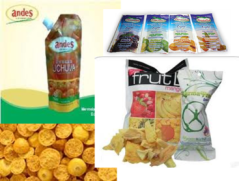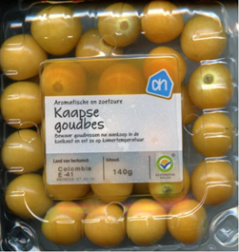Onderwerp scriptie
Consumer product interactions in consumer chains
Topic 1. Analysing how (mis)alignment in quality requirements along the supply chain can affect food waste.
How to reduce food lases and food waste is a core issue for policy makers and scientist.. Studies are currently focussing on specific parts of the food supply chain (e.g. improvement of techniques in food processing) although they acknowledge importance of a chain perspective. An explorative chain study indicated that quality requirements vary markedly along the supply chain.
The aim of this study is to assess to what extent quality requirements in different parts of the chain can be aligned in order to reduce the amount of food waste. The focus of this project is on understanding the motives for the set quality requirements in order to be able to define more realistic quality requirements.
The study comprises the chain from production to consumption by the consumer (at home or in a restaurant/ catering). An important aspect is to define ‘food waste’ and to assess a feasible yet reliable measuring method to assess food waste.
For more information on this topic please contact Bea Steenbekkers.
Topic 2. Understanding influence of technological and social/people factors on the occurrence of unnecessary food losses.
How to advance towards sustainable food supply chains is a topic that is high on the agenda of policy makers, NGOs, researchers, and the food industry. In order to reduce food losses during processing and food waste at consumption stages (i.e. catering, restaurants, households) it is necessary to get insight into the factors that incite unnecessary losses. Several studies have provided insights in the amount of food waste in catering settings and at household level, but analyses from a systems perspective are limited. A systems analysis requires an assessment of crucial elements in the system that could affect food waste, and understanding of the causal relationships. To our knowledge, much less is known on the relationship between food product characteristics, household/institutional facilities, social context (family/institutional), food handler characteristics and the occurrence of food waste. These insights are necessary to develop effective system interventions to reduce food waste
The study includes an in-depth literature and document analysis of food waste amounts, characteristics of waste streams and possible causes as input for the development of an analytical framework to identify and assess risk factors contributing to unnecessary food waste. Also serious gaming as a new tool for identifying cause-effect relationships could be explored as part of the thesis.
For more information on this topic please contact Daphne Roodhuyzen.
Topic 3. Analysing causes of food quality decay occurring between purchase and actual consumption.
In the last few decades, actors along the food supply chain invested a lot in control and assurance of, amongst others, safety, nutritional value, and sensory quality parameters of their products. Correspondingly, many studies focused on understanding factors influencing these quality parameters along the food supply up to the retailer. However, the quality of a food product is finally determined at actual consumption. This is after the food is prepared and served for consumption. This last part of the chain gained much less attention in research. Are the actual quality parameters in compliance with the intended quality as realised in the food supply chain?
The aim of this study is to get insight into technological and people-related factors that contribute to the decay of specific quality parameters (e.g. Vitamin C, low microbial levels, etc.) between the moment of purchase and actual consumption. The focus of this topic is on understanding user-product interactions and the motives behind this interaction.
The study comprises the analysis of actual purchase, storage, meal preparation, and serving behaviour of people in real life situations, and measuring the impact on specific quality parameters at consumption. An important aspect here is how to set up accurate and reliable observation experiments (methodological research question). The study investigates also the motives behind current behaviour in order to identify dedicated opportunities for different types of interventions (e.g. via communication, or technological/technical tools). Depending on the research progress and time, a selection of interventions might be tested on its impact on the measurable quality parameters.
For more information on this topic please contact Bea Steenbekkers.
Topic 4. Understanding consumer perception of ‘Naturalness’ in different product categories.
Companies promote their products using all kinds of claims on the packaging of their productsor in advertisements. The use of the claim ‘organic’ is regulated, but for ‘natural’ no rules are available. This implies that producers of food products can define their own rules and guidelines for claiming the naturalness of their products. It is not known to what extent consumers understand this claim, how they perceive and interpret it and what relationship they expect with food quality.
The aim of this study is to get insight into product, proces and human related factors that contribute to the perception of naturalness of products and to what extent that differs for different product categories.
The study links the perception of naturalness by consumers to product and process characteristics of (to be) selected product categories.
The goal of this study is to give recommendations for companies on how to take consumer perception with respect to their specific product into account when deciding about claiming ‘naturalness’.
The study will be based on study of the literature, interviews/questionnaires with consumers and experts within companies.
For more information on this topic please contact Bea Steenbekkers.
Topic 5. Consumer Behaviour and Food Quality.
Hardly any research is done on consumer handling and practices at home with food products. How are products stored and prepared and how do these practices influence the final product quality. In order to gain more insight into these behaviours, consumer research in daily life situations is needed to understand practices and motives behind these practices. The research methods used will be in home observations and interviewing consumers. With lab analysis the influence of the consumer behaviour on the final, consumed quality can be assessed.When these final steps in the food production-consumption chain are taken into account during product design, possible quality loss can be prevented by anticipating on the behaviour of the consumer.
This type of research needs to be done with all food products, according to the students’ own preferences: e.g. vegetables (including new products like sea weeds), dairy, meat, meat replacers (incl. insects), convenience products etc. Examples of products recently studied are broccoli and carrots as part of a hot meal. Also the influence of in home behavior on the quality of ready-to-eat meals has been studied.
The aim of the project will be to generate knowledge that can be used to improve product design and/or to inform consumers about more appropriate food handling.

For more information on this topic please contact Bea Steenbekkers.
Topic 6. Consumer attitudes and willingness to consume processed cape gooseberry products (Dutch case study).
Cape gooseberry is a promising fruit given its functional properties and fruit characteristics, which make it a good raw material for numerous products such as juices, jam, pulp, desserts, dehydrated fruit, oil, etc. Therefore, those processed products have been entered into the market to give an added value to the supply chain. The market for these processed products, however, currently is local and despite an interest by international markets there is a need to improve the knowledge about consumer willingness to repeatedly purchase these new products.
Aim
Assess consumer attitudes of Dutch people and willingness of consumption of cape gooseberry new products.
For more information on this topic please contact Mary Luz Olivares Tenorio.
Topic 7. Preferences on quality-attributes of European (or Dutch) actor of supply chain of cape gooseberry (Physalis peruviana L.).
The Cape gooseberry is a very important fruit for Colombia, given its international demand. The supply chain, however, still faces some barriers due to, among other factors, the lack of knowledge of consumer and buyer preferences. The market context in terms of quality attributes of the fruit and their importance in the purchase decision of chain actors is not clear. For this reason this project proposes to investigate the quality-attributes of Cape gooseberry and their importance for actors in the chain who have a purchasing role (importers, distributers, exporters, supermarkets).
Aim
Set up a list of contacts of European actor of supply chain and assess quality-attributes preference on cape gooseberry.

For more information on this topic please contact Mary Luz Olivares Tenorio.